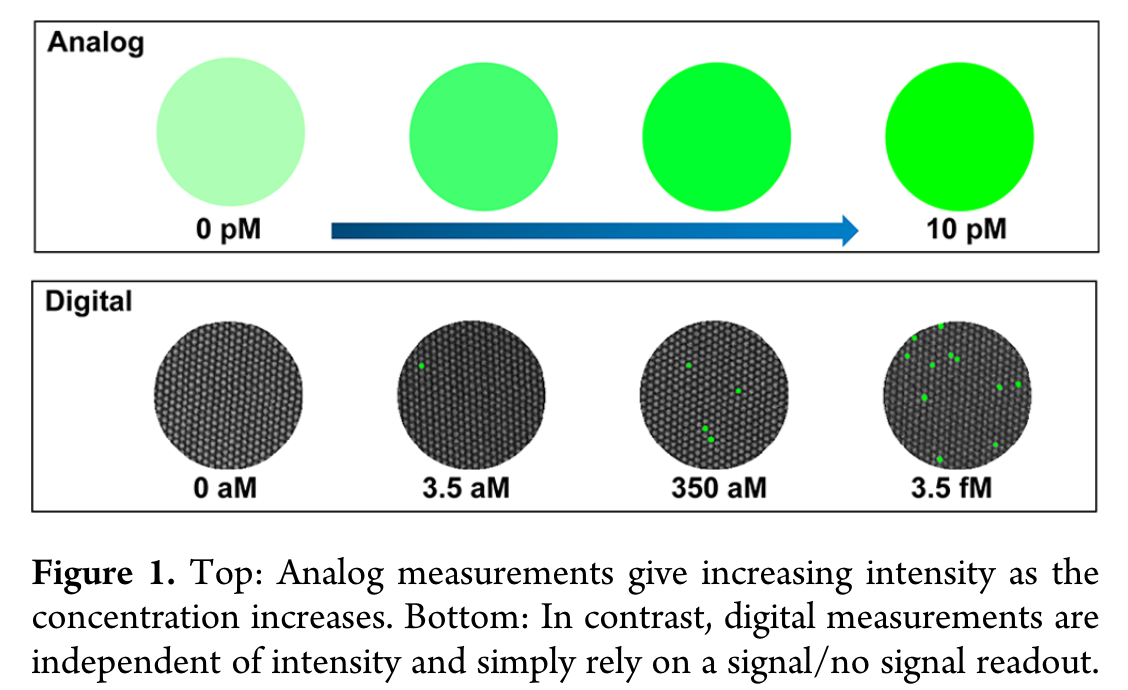Analog versus digital detection of molecules

When detecting concentration, for example, an analog measurement will yield an intensity proportional to the amount of analytes labelled. For this type of measurements to work, one needs to integrate over time. This is how a Elisa test work, or how plate readers operate.
On the other hand, single-molecule experiments are digital in nature[@walt2013Optical Methods for Single Molecule Detection and Analysis], there either is, or there isn't a molecule to be detected. Digital pcr, and Simoa are two types of measurement that exploit a form of amplification (either replication of a nucleotide strand, or using the non-linearity of the fluorescence signal) to determine the number of times a molecule is present versus the number of times it is not, hence generating a concentration measurement out of a digital system.
Backlinks
These are the other notes that link to this one.
